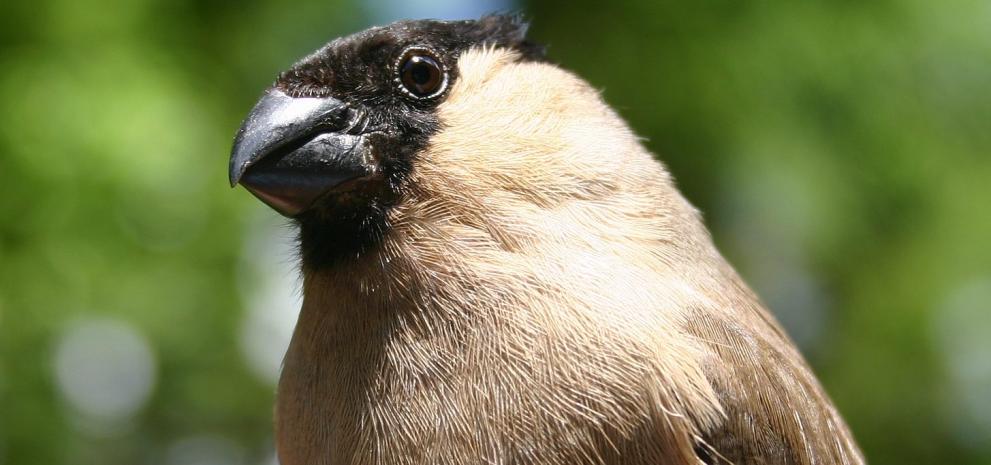
Once one of the continent’s most critically endangered birds, the Azores bullfinch - known to locals as Priolo and to scientists as Pyrrhula murina - can only be found on the island of São Miguel in Portugal. When the first LIFE project began there, the population had shrunk to below 100 breeding pairs. Now there are more than 1,300 individuals. ‘It’s not just the number of individuals but also the trend,’ says Azucena de la Cruz from the Portuguese Society for the Study of Birds (SPEA). ‘The population trend has been stable for the last eight years.’
‘The Azorean bullfinch was near extinction in the past,’ adds Ana Mendonca from the SPEA, which has led the last four LIFE projects on São Miguel. ‘Nowadays the population is three times bigger thanks to the efforts made to preserve the species.’
São Miguel enjoys EUROPARC Sustainable Destination status under the European Charter for Sustainable Tourism in Protected Areas. The island also includes the Special Protection Area (SPA) Pico da Vara / Ribeira do Guilherme, part of the Natura 2000 network. ‘Sustainable tourism is a really good way to promote local development through conservation,’ adds de la Cruz from SPEA. ‘From the beginning, our projects had a social component. We run education programmes, teacher training courses and public outreach.’
Eco-tourism is a major source of revenue for the Azores. ‘You cannot have nature tourism if you don’t preserve your biodiversity,’ says SPEA’s Azucena de la Cruz. ‘We hope by hearing the story of the Azores bullfinch, people are inspired to adapt it to species in their own land.’
The future of the Azores bullfinch looks brighter than it has for decades, moving from “critically-endangered” on the IUCN red list in 2003 to “vulnerable” in 2016. ‘When I was younger, we didn’t think about the bird at all,’ says 72-year-old João Mendonça, who helped build the Priolo Environmental Centre as part of LIFE PRIOLO in 2007. ‘Now, everybody cares about the bird and wants to see it. We feel so proud when people come from all over the world to see the bird.’
Building on this success, the six-year, LIFE Terras do Priolo project aimed to ensure the birds flourished in the long-term by restoring the unique laurel forests where they live, improving access to food and reducing of impact of alien predators.
Successive LIFE projects have focused on eliminating invasive species and restoring native habitats on which the Azores bullfinch depends for food and shelter. Between 2009 and 2013, for example, the LIFE LAURISSILVA SUSTENTAVEL initiative successful restored 52 hectares of native laurel forest and planted 86,000 new trees.
‘Our main enemy is invasive species,’ says de la Cruz. ‘The Azores have a wonderful climate and many species can take hold there. They are a big problem for the natural forests.’ To date, nearly 450 hectares have been restored and nearly 500,000 trees planted, improving the conservation status of 24 species and 13 habitat types protected under the EU Birds Directive and Habitats Directive.
Details
- Publication date
- 7 November 2023
- Author
- European Climate, Infrastructure and Environment Executive Agency

